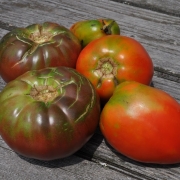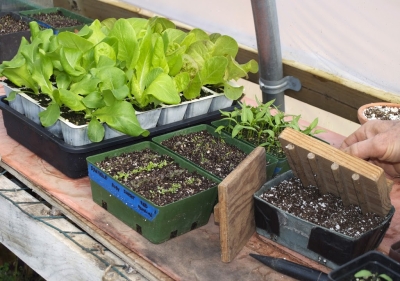KEEPING THE FAITH
Transplant Shock
A recent telephone call to my sister caught her setting zucchini transplants in her garden. “Transplanting zucchini?” I queried. “Have some faith in nature.” Transplants on sale this time of year too often entice gardeners to set out set them out in the garden rather than drop seeds into furrows.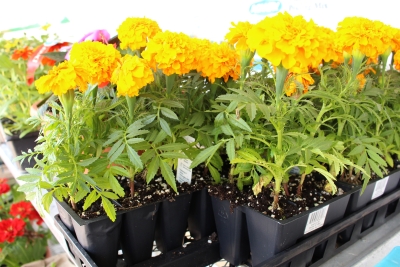
I pointed out that not every plant likes to be transplanted. Tomato plants yanked out of the soil will resume growth in a few days if their roots are covered with moist dirt. Roots will sprout even if just a stem is in moist soil. But the roots of plants like corn, poppies, melons, cucumbers, and squashes (zucchini included) resent disturbance. Carrots, parsnips, and many other root crops also transplant poorly. Their taproots become the harvested roots. If bent or broken while young, forked, rather than straight, smooth carrots and parsnips result.
This is not to say that it is impossible to successfully transplant squash, poppies, and the like. Any plant can be transplanted if enough care is taken not to damage the roots. A plant doesn’t even know it has been moved when a large enough ball of soil is carried along with the roots. (To paraphrase Archimedes, “Give me a big enough shovel and I can transplant any plant.”) Enormous trees can be, and are, relocated if taken with sufficient roots (and money).
My sister told me that her zucchini plants were growing in plastic cell packs. If the roots were not yet crowding each other against the plastic, and if the plants were gently slid out of their containers, the transplants will survive. I’ve even heard of gardeners even transplanting carrots — very carefully, no doubt.
Is It Worth It?
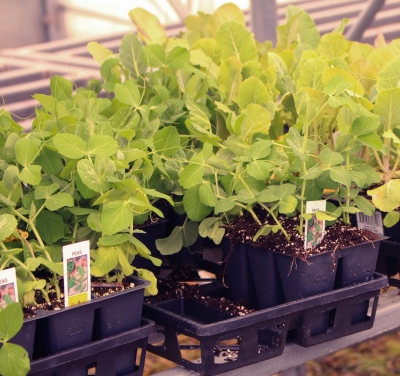
Pea transplants for sale
Many vegetables could be easily transplanted, yet aren’t worth the effort. A friend transplanted peas one year. Granted, his peas were a foot high indoors when mine were just breaking through the ground out in the garden. But how many pea transplants can a gardener care for? I grow about sixty feet of double rows of peas in my garden, from which I expect about twelve pounds of peas. Each pea plant, though, yields only about a quarter of an ounce of peas. Who has enough space and time to sow, water, then transplant even two dozen pea plants for the paltry six ounces of peas those plants would yield?
Generally, plants whose seeds are sown closely spaced in the garden are not worth transplanting. In the flower garden, this would include alyssum, portulaca, and pot marigolds (though I admit to starting a few alyssum plants indoors so they would spread and flower sooner).
In addition to peas, some other vegetables not worth growing as transplants include spinach, mustard, and beans. Black Seeded Simpson and other leaf lettuces (sometimes referred to as “cutting lettuces”) are generally sown directly in the ground. While the plants are still small, I’ll run a knife near ground level every couple of feet or so slicing off their tops. For the next salad, I’ll choose new groups of plants to cut. Within a couple of weeks, plants are again ready for harvest.
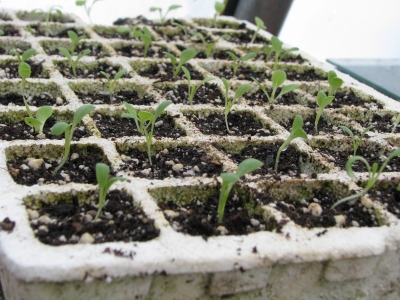
Bibb lettuce transplants
Heading lettuces such as iceberg, bibb, and romaine are worth transplanting because each plant needs space in order to head up well. Alternatively, heading lettuce could be sown directly in the garden, then thinned to the appropriate spacing.
(I list dates for sowing and transplanting various vegetables, according to your region, in my book Weedless Gardening, available from the usual sources or directly from me here.)
Exceptions to Prove the Rule
“Trust nature,” I told my sister. “Sow seeds on the correct planting date in good garden soil, and they’ll germinate. Save transplanting efforts for vegetables like tomatoes and peppers, which need to be started early indoors in order to ripen their fruits in a reasonable amount of time. Or broccoli and cabbage, because individual plants yield a substantial amount to eat. Tomato, broccoli, and cabbage plants don’t object to being transplanted, and not too many transplants are required since they are set a couple of feet or more apart in the garden.”
Seeds which are particularly finicky or valuable (due either to scarcity or cost) also are worth growing initially in pots. Although hardy cyclamens (Cyclamen heredifolium) do self-seed under ideal conditions, I wanted to greatly increase my holdings. 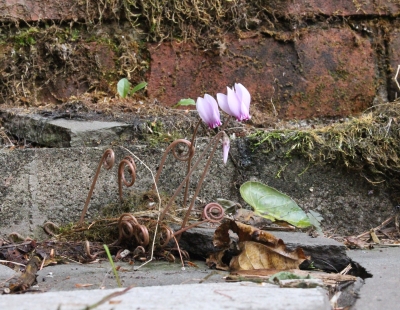 They’re a little finicky to sprout, so I collected seeds from one of my plants and planted them in a seed flat, where I could watch and nurture them individually, then transplant them to individual pots. Here it is, three years later, and later this summer, delicate pink flowers will hover like small butterflies above each of the ten fat tubers.
They’re a little finicky to sprout, so I collected seeds from one of my plants and planted them in a seed flat, where I could watch and nurture them individually, then transplant them to individual pots. Here it is, three years later, and later this summer, delicate pink flowers will hover like small butterflies above each of the ten fat tubers.
Sure, it may be worthwhile to start a few corn plants indoors, because fresh sweet corn is one of the ultimate gustatory pleasures of the vegetable garden. But is zucchini that toothsome?

